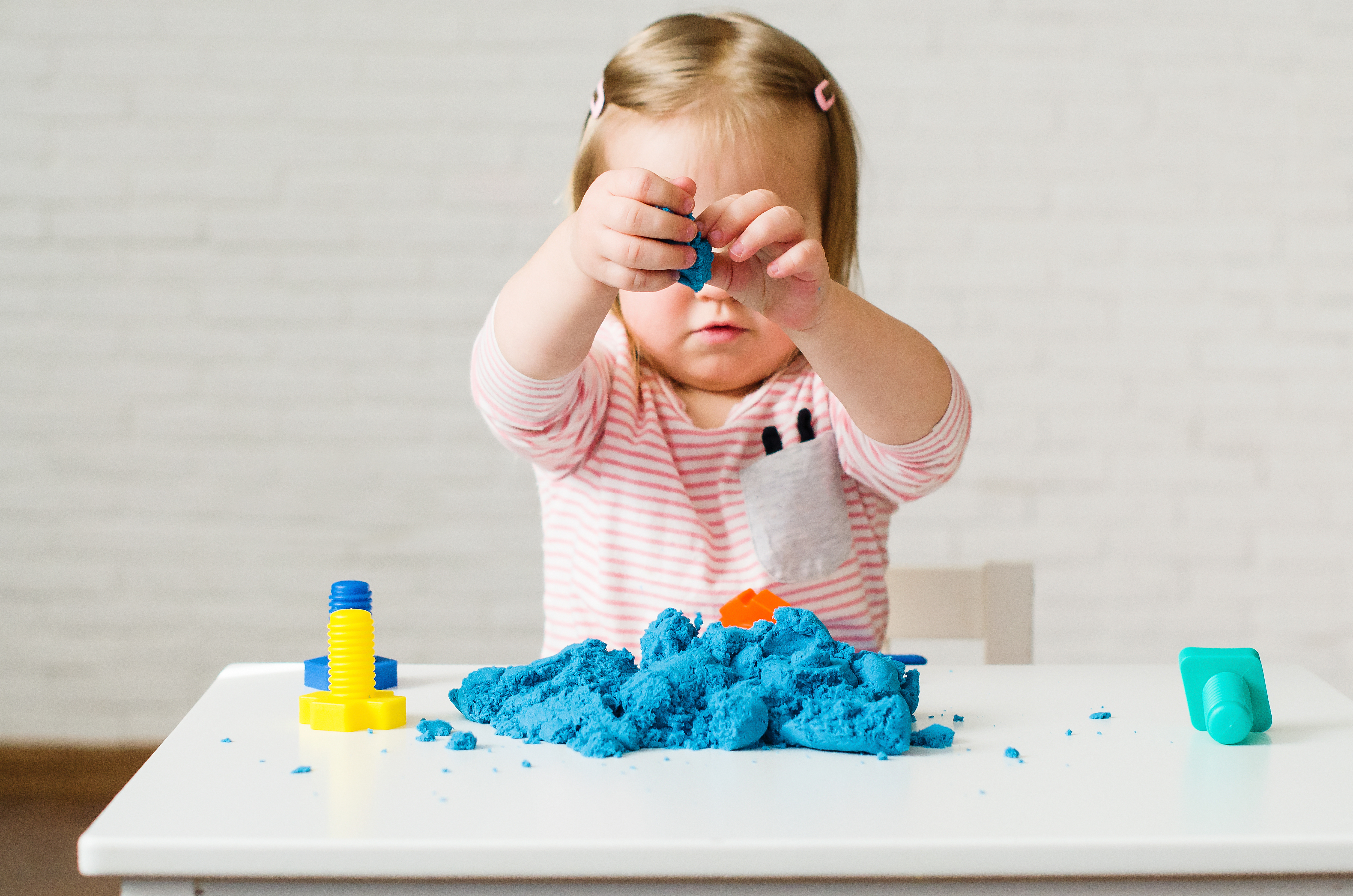Author: Rebecca O'Callaghan, M.S., OTR/L, SWC
How to Facilitate Tactile Play with Your Child
Do you let your hands and feet get messy? Or do you wipe them off right away? Do you avoid eating any specific foods or food textures? Really think about it. Do you knead dough by hand when baking or do you use a mixer? Do you hose off your feet after walking in the sand or throw on your flip-flops and just go? How’s that raw sushi in your mouth, that banana you’re eating, or those brussels sprouts? Your answers to these questions may give us some insight into how your tactile system tolerates various textures. Does something give you the “heebie-jeebies” when you touch it…ahem chalk, Miss Becca?! Well then you are likely experiencing an aversion response to something you’ve touched. The way in which we can process touch is variable. And how do we process touch? With our skin! Want to know a FUN FACT!?...the skin is the largest organ of the human body!
Okay, so we won’t get into the details of the skin organ system here, but just know that it is very complex. The tactile system and the underlying somatosensory system play a big role in giving us information about things like touch, pressure, pain, temperature, and textures. Did you know that your hands and your mouth have the most tactile receptors, more than any other areas of our skin!
So why is this important? Well, children explore their environment and learn information through touch. Not all children like all textures and this is perfectly normal. However, for some kids the tactile system doesn’t always discriminate sensations and objects effectively. In fact, some children may be overly sensitive or avoid certain things, while other children can’t seem to get enough. In occupational therapy, we look at to what degree is this impacting your child’s functional participation in day-to-day tasks. Avoiding activities like dressing, bathing, brushing hair, brushing teething, eating foods, and resisting touch may be signs of an overly sensitive tactile system. Splashing intensely in the water, leaving hands and face messy, or constantly touching objects or people may be signs of a tactile system that is under-responsive or overly seeking sensory information. You may also see that not only does your child exhibit certain sensory patterns, but that behaviors may also occur when attempting or participating in certain activities that require the tactile system.
Is your child sensitive to tactile input?
If your child is sensitive to tactile input, you may see some of the following actions and behaviors:
- Facial Grimacing (think of how you can’t help but make a face when you taste a sour lemon!)
- Constant hand wiping/ hand washing
- Finger splaying (fingers are held in an out-stretched position not touching one another)
- Emotional Distress (such as crying, prolonged tantrums, or a series of cyclical emotional outbursts)
If your child is showing sensitivities it is essential to build your child’s tolerance to textures slowly. Using the texture continuum (see right) will help you to move from less challenging textures toward more challenging textures. Allow your child to control his/her level of interaction with the texture. NEVER force your child’s hand into a texture. It can be helpful to start with some tools or barriers to assist in initial contact with textures. Some examples of tools or barriers include:
- Ziploc bags (put the texture in the bag then touch it)
- Use a spoon or shovel to touch and scoop
- Use cups or funnels – fill them up or pour them out
- Sponges, loofas, or washcloths can be added to wet textures
- Tongs or tweezers
- Bug catcher or aquarium net
- Plastic kid-play hammer (smash ‘em!)
The Tactile Texture Continuum
Dry (non-stick)
- Rice
- Beans
- Pasta
- Oatmeal
- Split Peas
- Salt
- Sand
- Cotton Balls/Pom Poms
- Crinkle paper/shredded paper
Dry (sticky)
- Flour
- Corn Meal
- Dirt
- Birdseed
- Shape It Sand
- Play-Doh®
- Play puffs (slightly dampen)
Wet
- Water
- Water Beads
- Instant-Snow (SnoWonder®)
- Bubbles
Sticky
- Foam
- Slime
- Glue
- Hair Gel
- Cooked Spaghetti
- PlayFoam®
Gooey
- Cornstarch & Water Mix
- Finger Paint
- Shaving Cream
- Lotion
- Jell-O®
- Pudding
- Gelli Play®
Tactile Play Ideas
- Add some fun to bath time by bringing in some bubbles and bath toys to enjoy.
- Fill a bin with dried beans, rice, and pasta. Add some toys trucks and other toys for added fun.
- Try placing colored rice into Ziploc bags and letting your child explore the textures. You can do this with paint, shaving cream or sand too!
- Dye cooked spaghetti noodles with food coloring and let your child play with some spaghetti “worms.” Add some more textures by adding some small objects for them to find, dirt, sand, or shaving cream.
- Bury small objects like beads or coins in slime or Play-Doh for your child to find.
- Grab some fun toy water animals, balls, cups and other objects around the house and place them all into a bucket of water.
- Fill a sheet pan with some shaving cream and place some drops of food dye on top. Let your child have fun by mixing up the colors with his/her fingers! Try adding some toy cars for more fun.
- Have fun with some finger painting!
- Bury small objects and toys in Jell-O and have your child try taking them all out. Tip: let the Jell-O sit out for a little bit so it warms up and isn’t too cold to touch.
- Play with some food colored ice cubes and dry rice. Watch as the ice melts and dyes the rice different colors. You can also swap out the dry rice for some shaving cream.
- Get out some Tupperware and place some cotton balls and small beads inside.
- Soak some water beads overnight in a bin, then play the next day! For added fun you can add them to shaving cream or freeze them!

